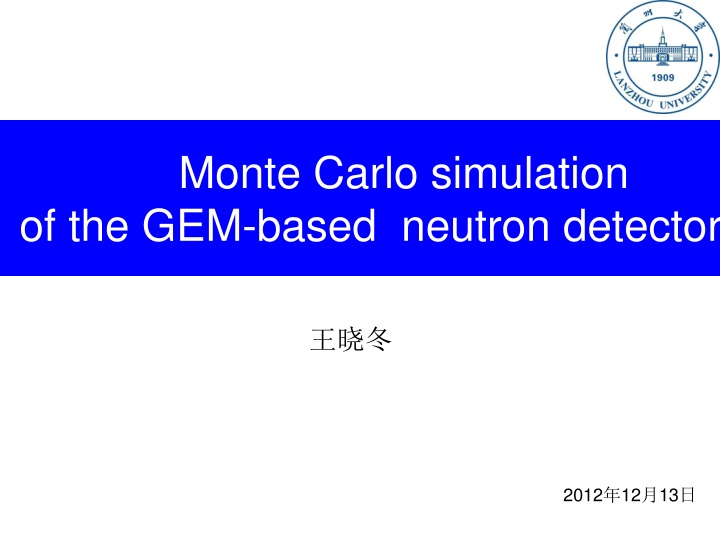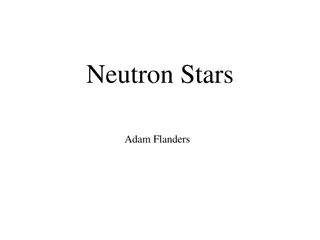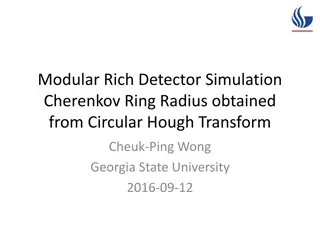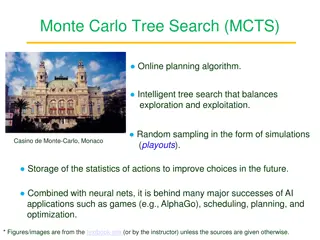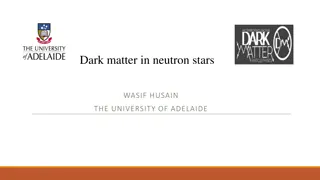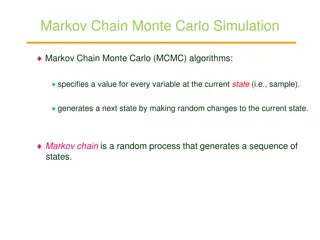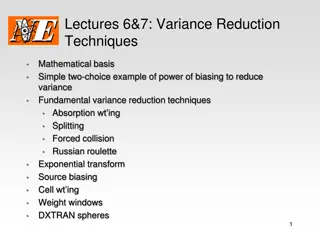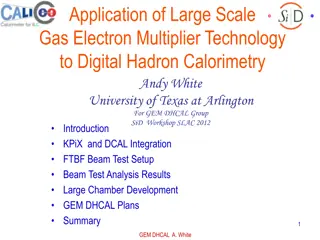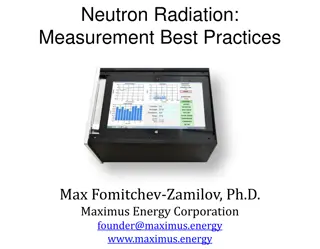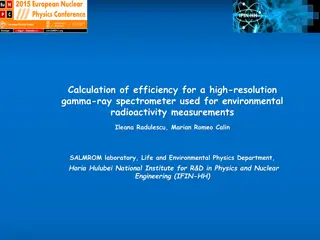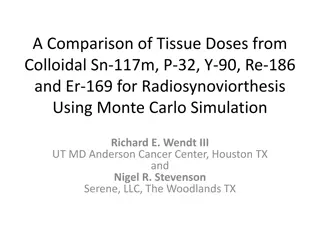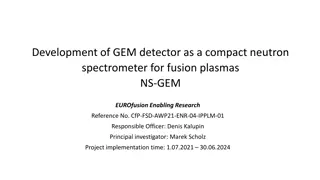Monte Carlo Simulation of GEM-Based Neutron Detector and Detector Performance Analysis
A detailed exploration of Monte Carlo simulations for GEM-based neutron detectors, investigating their detection efficiency and performance characteristics. Various detector designs and concepts, including multi-layer converters and GEM detectors, are discussed, along with simulation results on signal conversion, deposited energy, and detector vessel specifications. The study delves into incident neutron positioning and the efficiency of gas gaps and converter layers. These findings provide insights into optimizing neutron detection technologies.
Download Presentation

Please find below an Image/Link to download the presentation.
The content on the website is provided AS IS for your information and personal use only. It may not be sold, licensed, or shared on other websites without obtaining consent from the author.If you encounter any issues during the download, it is possible that the publisher has removed the file from their server.
You are allowed to download the files provided on this website for personal or commercial use, subject to the condition that they are used lawfully. All files are the property of their respective owners.
The content on the website is provided AS IS for your information and personal use only. It may not be sold, licensed, or shared on other websites without obtaining consent from the author.
E N D
Presentation Transcript
Monte Carlo simulation of the GEM-based neutron detector 2012 12 13
Fast/Thermal neutron detector + + + 10 7 . 2 792 n B Li MeV 6% + + + + 10 7 * . 2 31 n B Li MeV 94% 7 * 7 . 0 48 ( ) Li Li MeV + + 1 ' n H p n Ionization electrons are multiplied & localized in cascaded-GEMs imaging detector. Detection efficiency: < 0.1%(fast-n) ~ 5% (thermal-n) GEM foil
A novel high efficiency neutron detector based on GEM The drift electrode is made of 50um aluminized Mylar, under which is the multi-layer HDPE converters with thickness of 1200um, length of 3mm and the interval of 500um between two converters. The chambers are filled with 95%Ar+5%CH4 gas mixture at atmospheric pressure. E_drift=3kV/cm. The 14MeV neutron source is setup isotropically and can generate 10e7 of random passages in each simulation. In our simulation, only H(n,n )p elastic scattering is considering and the detection efficiency of gas detector for charged particles is assumed to be 100%.
Multi-layer converter + GEM detector HDPE layer n Detector Concept: n n scatter on H in HDPE-converter foils, p escape the foil. p induce e-in gaseous conversion gap. e-are multiplied and localized in GEM-detector. Combine several 1D radiographs 2D cross sectional tomography. V p E GEM1 GEM2 2D Readout Board Detector Design: Foils thickness (14 MeV neutron) Gas gap thickness (Deposited energy) Number of converter foils (Detector length) Detector performances: Detector efficiency(Conversion efficiency) Efficiency of transport e- in small gap(Transport) Spatial resolution (Imaging)
Simulation Singnal Converter Thickness n n Scattered neutron HDPE p Impinging neutron (En) 1200um Target Recoiled nucleus (ER) For 14 MeV neutron impinging on HDPE layer: -) Max. Efficiency 0.37% -) Conversion thickness = 1200 m -) Broad Spectrum (0 ~14 MeV)
Simulation Deposited Energy in the gas gap HDPE Ar/5%CH4 (1 atm) e- n p HDPE Tgas
Detector Vessel Converter thickness1200um Gas gap 500um Layers 400 14MeV Neutrons Detection efficiency 2.3% Large tolerance 0.7m
Simulation Incident neutron position reconstructed
250um 300um 380um 400um
Conclusion Detection efficiency of the detector with 400 converter units can be better than 2.3%. Reconstruction accuracy of the incident neutron position can be better than 2% New ideas Length of the converter and antistatic HDPE material(ABS-ESD7). THGEM instead of GEM. 3D printing techniques
Future Plan 14MeV neutron imaging Gas fill Ar5%CH4 Detector vessel HDPE converter 14MeV neutron
